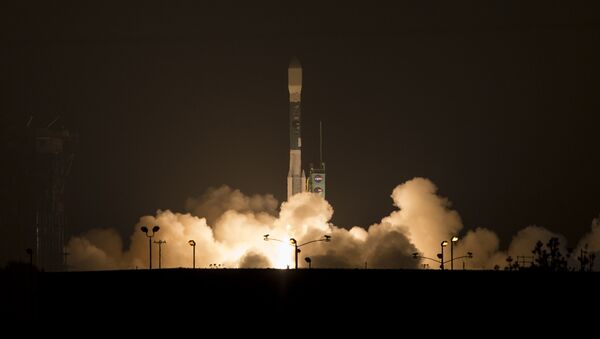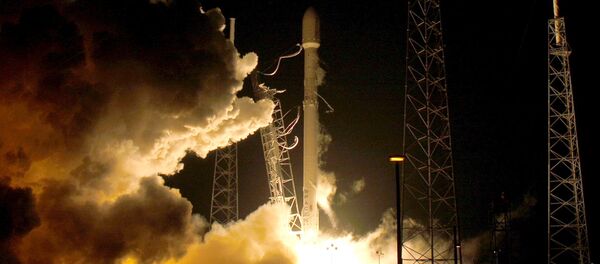There will be no Space Corps for a time being, officially. Congress has come to the conclusion that creating a separate branch of the Air Force — in a way similar way to US Navy's Marines — will only add more layers of bureaucracy, and the USAF is struggling with various legacy issues, one being a huge latency in procurement time.
According to a report by Defense One, if the USAF needs a new satellite job and cannot re-task an existing satellite, it is worse than a mere inconvenience. Unlike other businesses, USAF chiefs cannot tell their contractors that they need a satellite yesterday.
It takes up to ten years for a USAF satellite to go from the development stages to floating around in space looking threatening through existing conventional procurement schemes.
According to General David Goldfein, the branch's Chief of Staff, the USAF used to operate in space as in an "uncontested domain."
"We had the luxury of going slow because our adversaries were not pushing us," Goldfein said. "It was an environment there was little competition when it came to testing the environment. We're in a different place now. Like the nuclear enterprise, space is the other enterprise where we're going to have to look at speed as a key attribute for success. How we get there is going to be as much a cultural change as a tactical change," cited by Defense One.
With a decade to get a satellite done, there's no wonder the USAF holds a rather small office called the Operationally Responsive Space (ORS) in such high regard. Created in 2017, ORS is currently just a small workshop that takes orders directly from USAF brass and starts working on their tasks right away.
ORS can build a small satellite in three years, if, in the words of Defense One, the build is what the USAF calls an "urgent operational request."
"They've cut years off the process, and millions of dollars," said Goldfein. "We saw a great example of how to actually, on a risk-based model, achieve speed in acquisition."
But speed comes with certain limitations, including that what the ORS builds is not robust enough to last for decades, like an average GPS satellite. ORS satellites are expected to operate for several years prior to being discarded.
And yes, ORS has had some failed launches, but that's okay, as who hasn't?
But it is still a long way to go before ORS will build larger and more complex systems, or, the USAF Space and Missile Systems Center would join the modern world and pick up the pace.
The USAF still — remarkably — depends largely on Russian rocket engines for its Atlas rockets, instead of their own much more expensive Delta rockets, set to retire within the next decade.
This has forced the USAF to develop a whole new rocket, which comes in the form of Boeing and Lockheed Martin's United Launch Alliance ‘Vulcan' rocket, which is not yet complete, and remains unknown what it will cost. Even the Vulcan engines (the Blue Origin BE-4 and competitor Aerojet AR1) are not there yet.
According to Ars Technica, Congress doesn't make the race to militarize space any easier.
"On the plus side, [the National Defense Authorization Act] continues funding for the US-built engines the rocket needs and costs to integrate those engines into a new rocket. However, the bill does not include funding for the development of a whole launch system, which had been sought by ULA's parent companies, Lockheed Martin and Boeing," the website reported.
During its announcement, which featured former Texas Governor Rick Perry, SpaceX founder Elon Musk proclaimed that the first commercial space flights would take place there in late 2016. But according to the report, only two inoperational tracking dishes are to be seen at Boca Chica, as well as a large platform of compacted soil and a fence with a ‘SpaceX Launch Site' sign.
SpaceX made an agreement with Texas, pledging to provide some $15.3 million in incentives for the project, with $2.3 million from the jobs-focused Texas Enterprise Fund and $13 million from another state fund called the Spaceport Trust Fund, not to mention millions more in various tax incentives committed by local governments near the proposed launch site.
On their end, though, the company pledged to create the jobs for Americans that US President Donald Trump often talks about. According to AJC.com, SpaceX pledged to hire 120 people by the end of 2017 and 300 by the end of 2024. Currently, they've hired 10.
"Being behind schedule is kind of par for the course for SpaceX," said Bill Ostrove, primary space analyst for Forecast International. "They lay out very aggressive plans in terms of time schedules that are very rarely if ever met. There's kind of an expectation that anytime SpaceX gives you a date, you always have to assume that there is going to be a few years of delay."
SpaceX also had an explosion during recent rocket engine test, Space.com reports.
The USAF wants to accomplish a lot, but its hands are tied. In the words of Paul Kaminski, a former US under secretary of defense, "[the USAF is] now at a critical juncture… This is a fragile environment with conflicting objectives and the imposition of serious limitations and constraints."
"If we don't act now, the result will be increasingly fragmented efforts which will increase cost and risk, and limit the innovation needed to provide the future capabilities and costs that are so critical to our national needs," he wrote for Space News.






